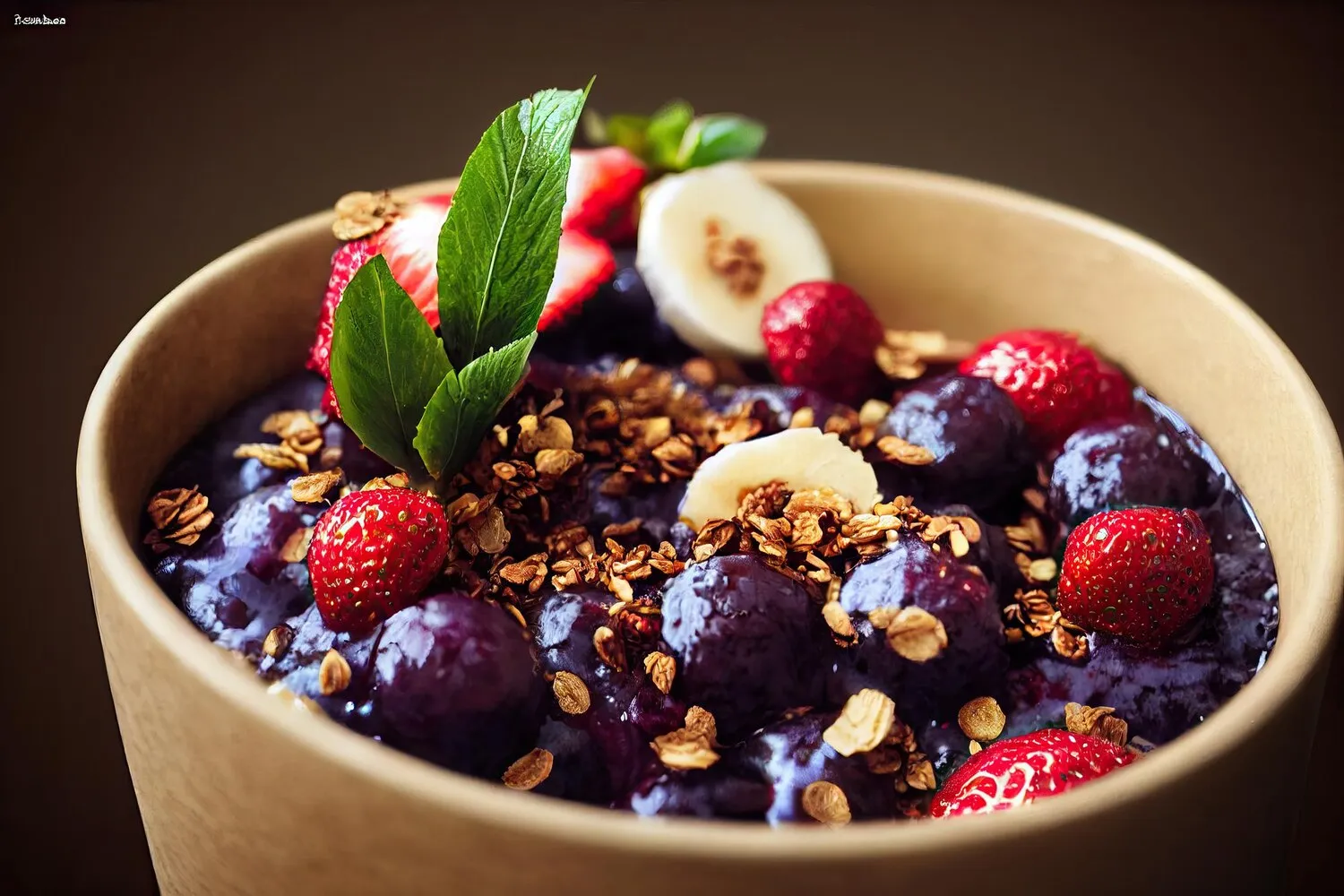
Açaí
Açaí bowls with various toppings.
Nutrition Facts
* The % Daily Value (DV) tells you how much a nutrient in a serving of food contributes to a daily diet. 2,000 calories a day is used for general nutrition advice.
Açaí has been a staple food in the Amazon region for centuries, consumed by indigenous populations long before its global popularity. Traditionally, it was prepared as a thick drink or porridge, often mixed with tapioca and other local ingredients. Its rise to fame outside the Amazon is relatively recent, beginning in the late 20th and early 21st centuries, spurred by athletes and health enthusiasts who discovered its nutritional benefits.
Açaí holds cultural significance in the Amazon region as a source of sustenance and energy, and its growing popularity has made it an iconic representation of Brazilian cuisine and healthy living worldwide.
Amazonian Staple
Açaí has been a vital part of the diet of indigenous Amazonian communities for generations, providing essential nutrients and energy for their active lifestyles.
Brazilian Beach Culture
In Brazil, açaí bowls are commonly enjoyed at beaches and cafes, reflecting a culture that values outdoor activities, healthy eating, and natural ingredients.
Global Health Trend
Açaí's recognition as a superfood has fueled its global popularity, associating it with healthy lifestyles and a focus on nutrient-rich foods.
Açaí bowls offer a complex flavor profile balancing earthy, slightly tart berry notes with creamy textures and sweet toppings.
The base flavor is derived from the açaí berry itself, which is less sweet than typical berries, possessing an earthy and subtly tart taste, sometimes described as having hints of chocolate or red wine. The creamy texture is achieved by blending the frozen açaí pulp with liquids like water, milk (dairy or non-dairy), or juice. Toppings introduce a variety of flavors and textures: fruits (banana, strawberries, blueberries, mango), granola (sweet and crunchy), nuts and seeds (provide healthy fats and textural contrast), nut butters (adds creaminess and richness), honey or agave (for added sweetness), and even chocolate or coconut flakes (for a more indulgent experience).
Balancing Sweetness
Açaí is naturally less sweet, so control the added sweetness. Start with minimal sweeteners like honey or agave and adjust to your preference. Consider using naturally sweet fruits like banana or mango to reduce the need for added sugars.
Texture is Key
Achieve a thick and creamy consistency by using frozen açaí pulp and blending it with a small amount of liquid. Experiment with different liquids like almond milk, coconut water, or even just a splash of water.
Nutrient-Rich Toppings
Choose toppings that enhance both flavor and nutritional value. Opt for fresh fruits, granola, nuts, seeds, and nut butters to add vitamins, minerals, fiber, and healthy fats.
Portion Control
While açaí bowls are generally healthy, be mindful of portion sizes. Toppings can add extra calories and sugars, so enjoy in moderation as part of a balanced diet.
Explore additional Açaí dishes and restaurants
Explore AçaíDiscover top dining spots and culinary experiences in São Carlos.
Explore São CarlosLearn more about the food culture, restaurant scene, and culinary heritage of Brazil.
Explore Brazil